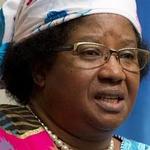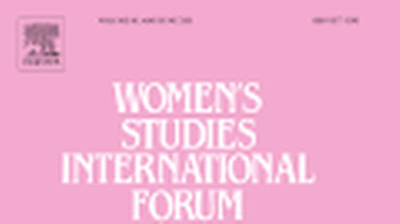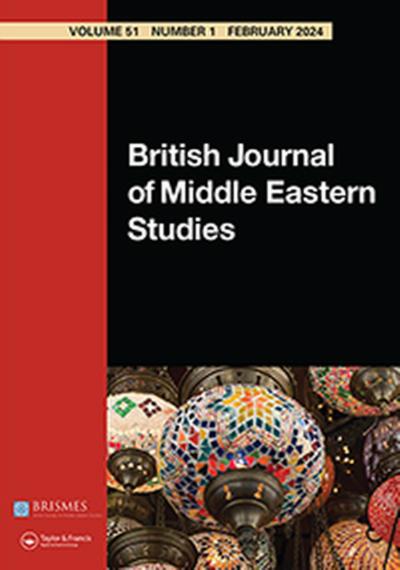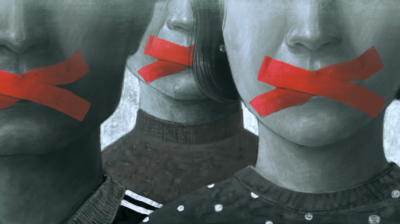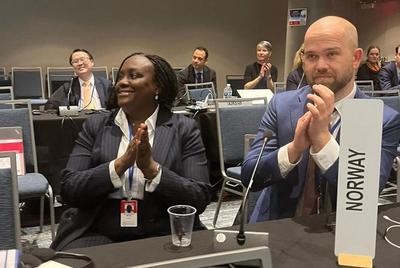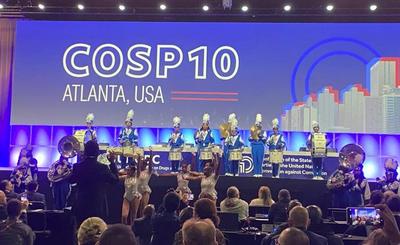The Gender Machinery Women in Malawi’s Central Government Administration
Malawi has its version of a ‘national gender machinery’, like many other countries, established to break the barriers against women representation in politics and to promote women interests. However, the way in which this machinery is established risks institutionalizing and deepening the gender gap. In particular, the fact that a female minister has always headed the Ministry of Gender and the fact that that the Ministry is heavily donor-funded and driven, can make gender issues ‘for women only’ and make their efforts cosmetic and symbolic. This policy brief highlights the opportunities and challenges of organising the gender machinery on the clientele and semblance principle and according to donor funding opportunities.
The so-called ‘national gender machinery’ is established to coordinate government interventions to promote gender equality which consists of a network of national institutions, mechanisms and processes coordinated by a central policy coordination body. At the peak of the system is the (currently named) Ministry of Gender, Children, Disability and Social Welfare (MoGCDSW), which has a network of offices in all districts and extension staff down to the community level in many areas. Its mandate is to provide policy direction and lead the formulation, implementation, coordination, monitoring and evaluation of the national Gender Policy, which is the Government’s gender equality programmes, projects, and activities on all levels.
Central government plays a critical role in delivering public goods and services. In the case of gender equality, the institutionalization of a gender machinery with a Ministry of Gender at the level of executive government has been the game-changer in response to the wave of activity for gender equality in public governance in Malawi.
The institutional design, however, has a substantial influence on the effectiveness and responsiveness of the central government. On face value, the gender machinery is aligned to women interests and seeks to break the barriers against women representation in politics, but the case of Malawi illustrates well some of the challenges of institutional design. The institutional set-up is basically founded on the so-called clientele principle, which risk feminizing the gender institutions and give the impression that gender issues are just for women. It is also a response to external forces rather than a response to internal needs, which risk them pursue peripheral interests that can make them go off-track on the agenda of promoting women representation.
The Feminization of the Ministry
The institutional design for the central government in Malawi has largely followed the ‘clientele principle’. The logic of the clientele principle is that groups of people are best represented and served by individuals with whom they share characteristics and interests. The discussion on women representation in the central government administration has largely fallen within this idea of a clientele, and establishing a perfect match between the gender of the clients and the gender of the office-holders and civil servants has preoccupied the minds of the policymakers and of the appointing authorities.
Now, Malawi falls within the experiences of many other countries in Africa (and beyond) with the ministries of women and gender being headed by female ministers. In fact, since the return to multiparty politics in 1993, a female minister and a female deputy minister have always headed the ministry. When the top political leadership of the Ministry has always been filled by women, and the top technical leadership has also been relatively dominated by women, the feminization of the Ministry seems complete. Below is a list of the ministers of ‘gender’ from 1994 and the various names of the Ministry (the cabinet portfolio).
In our study, we have found that the fact that the ministers have always been women is giving the impression that gender issues matter for women only. We have also found that it has resulted some male bureaucrats not being fully committed to their work because they feel they are in a wrong territory. It has created some antagonism as well as frustration among bureaucrats as it has become evident that career-advancement stagnates at a particular level, as one of our informants points out:
“for the reason that they do not belong to the sex designated for the top leadership positions”.
A report by Malawi CSOs made a similar observation, that the appointment of only female ministers for the Ministry
“has only succeeded in creating a mind-set that gender issues are women issues only such that some high-ranking government male officials do not see the need to take gender issues seriously”.
Furthermore, the institutional design is set up to avoid party politics and to ensure that women are represented in top positions. The Government of Malawi has even taken a step further than the Beijing Platform and the Commonwealth Plan of Action for Gender Equality in adopting a 40/60 per cent quota on employment in the public service, with a provision made in the Gender Equality Act of 2013. This requires an appointing authority in the public service to appoint no less than 40 per cent of either gender in any department in the public service. To fully implement the 40/60 quota, the Malawi Public Service Regulations has to be amended in terms of employment in the public service.
The use of such rules that side-step competitive elections have helped to narrow down the representation gap created by electoral politics. The logic behind the institutional engineering of decision-making powers seems to be, however, that only a few individuals, deemed capable of pushing a particular agenda, take part in the decision-making processes. The danger in applying the clientele principle is that it creates an image that the national gender machinery is an instrument for the promotion of certain individuals.
In other words, the logic of nominating women only to the top positions in the Ministry has had some disadvantages, like a lack of support from parts of the bureaucracy (despite lots of support from the development partners, a point we will return to below). It also creates an image that the national gender machinery is an instrument for feminizing public institutions, for the promotion of certain individuals, and this runs the danger of the Ministry only paying lip-service to women at the grassroots.
Table 1: Ministers of Gender since 1994 and their portfolio
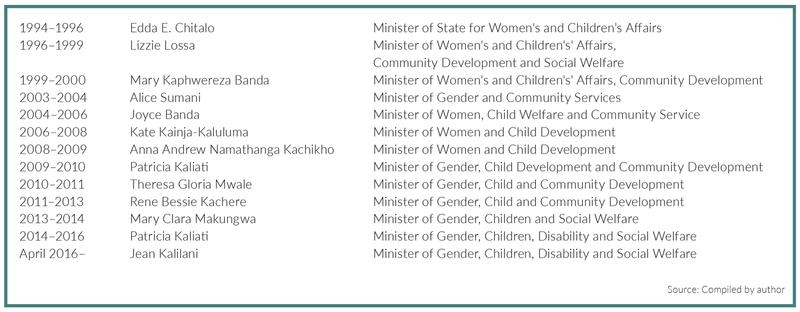
Capturing Resources
Malawi has used women in high positions and women-centred institutions to build a positive international image of Malawi. Former President Bingu wa Mutharika often made remarks that his government was interested in achieving a representative and inclusive public machinery, and he made deliberate efforts to appoint women in key and top decision-making positions. The enhanced representation of women in public positions and the deliberate appointment of women in positions of influence (read: women Ministers of Gender) has put Malawi on good terms with the international community.
As a member of several regional and global governmental organizations, and through its representation by the Ministry, Malawi also gets acquainted with what is unfolding at the international level. When the government, through the MoGCDSW, is represented by top political and technical officers, there is also a greater chance that the regional and global instruments will translate into domestic policies.
Despite this, representation needs to be matched with technical and financial resources if the representatives are to deliver on their mandate. Overall, government institutions in Malawi are underfunded as far as budget support is concerned. The case of the MoGCDSW is of concern, because for years it has lagged far behind the top ministries. In the 2010/11 budget, the Ministry of Gender, Child and Community Development (as it was named by then), was allocated only MWK 716.69 million, and in the 2015/16 fiscal year the budgetary allocation for the Ministry of Gender is the lowest of all ministries, with less than 0.36 per cent of the national budget. The underfunding is such that the Ministry has a problem in delivering on its mandate.
The underfunding reflects the financial struggle of the Malawi Government. Yet, given the international donors’ commitment to gender-related activities, a designated ministry has been perceived as an effective mechanism to get hold of these financial resources. Since development partners in many cases want to see that institutions for implementing activities are in place before they provide funding, the MoGCDSW is indeed a good ‘resource mobilization’ ministry.
In June 2015, current President Arthur Peter Mutharika repeated his commitment to achieve gender equality, and signed another campaign, the She 4 He Commitment.
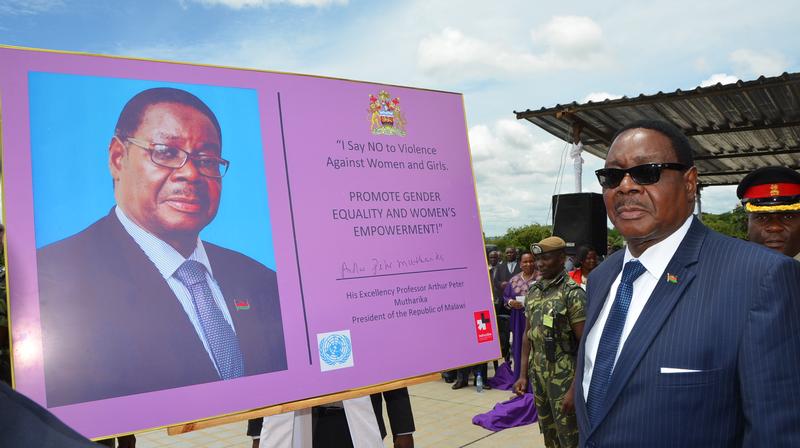
Numerous re-designs of central government ministries and cabinet shuffles have not changed the ability of the ministry mobilize donor resources. In fact, the re-designs and re-shuffles have not made any substantive changes of the MoGCDSW, because a thorough re-design of the Ministry of Gender would entail that:
“the government is shooting itself in the foot as donors will start thinking the government is not committed to implementing national gender machinery, and withdraw their aid. Government does not want to lose the resources it gets from development partners that are supporting gender activities” (Interview with public official, 13 July 2015).
The strategy of the MoGCDSW as a ‘resource mobilisation’ ministry has so far worked well, but the government is caught up in a situation where it has created women-centred institutions to ‘play the game’, without necessarily shaking off the foundations that prevent high women representation in public life. The Ministry receives financial (and technical) support from different donors including UNICEF, UNAIDS, Norad/Norway, USAID, AfDB, UNDP, and UN Women. Development aid from donors to the Ministry is mostly off-budget and delivered through programmes and projects, and in 2009/10, the Ministry received USD 5,705,080 from donors, which covered 99 per cent of its total budget. Consequently, the government is relieved of some resources that it now spends on other sectors (the so-called ‘budget fungibility’).
Our study indicates, however, that the Ministry, to some extent, has lost direction regarding service delivery and pursuance of objectives. The MoGCDSW has the specific function of promoting gender equality and protecting the welfare of Malawian women, men, girls, and boys to become self-reliant and active participants and beneficiaries of the national development agenda. Yet, because of the funding attraction of ‘women projects’, we note a certain goal displacement, a pursue of non-core, peripheral interests and project funding, that make the Ministry becoming less powerful in formulating policies, coordinate activities, and in monitoring of the government’s overall gender policy.
For instance, the Ministry fails to strike a balance between managing government-sponsored activities and donor-funded projects. Our study shows that donor projects and the ministry’s own activities compete for time, and that staff prefer to spend more time on donor projects because they are more rewarding than the Ministry’s activities. It can be argued that the Ministry has become a ‘project implementation unit’ of the development aid agencies.
This sentiment is echoed by a key informant who observed;
“When you compare the government and donor activities, we are more committed to donor projects as compared to government projects. We don’t want to lose the funding and just have to deliver and do the paperwork such as writing reports. Staff from development partners are our supervisors and we are the implementers” (Interview with public official, 19 July 2015).
The shift of attention from the implementation of government priorities to the initiatives and projects funded by development partners moves members of society away from public services. Projects are implemented in a few, selected impact areas and for specific clients. Some of the projects are not even within the mandate of the Ministry. Still, the Ministry cannot refuse to implement these projects because it needs the funding to reach out to its clients, and more importantly, to be visible (or seen to be visible).
Policy Options
In order to make gender issues a matter for all, there is a need to re-brand the image of the Ministry to reflect an inclusive institution. The institutional design should try to strike a better balance between women representation and service delivery to the general public, so that the stereotyping of the MoGCDSW as a women-centred institution can be eased. This means the Government should re-consider the practice of nominating females only to the top leadership positions of the Ministry. This will help re-brand the image of the Ministry to reflect an inclusive institution. At the point of service delivery, the Ministry should enhance its efforts in integrating men in the services it offers to the public. The Ministry needs to make men strategic partners.
The ability of the MoGCDSW to achieve its strategic goals is also weakened by internal constraints. NGOs compete with the Ministry and among themselves for attention and funds. This calls for a clear organisational structure with a Ministry with a stronger role in making policies and policy direction. The Ministry should strengthen its authority as a policyholder, and give instructions (founded in a democratic decision-making process) as to which areas are most in need of technical and financial support. These policies of the Ministry should be referred to in all discussions with external partners. Only if the Ministry takes charge of the policy direction will external funding be directed to the priorities of the Ministry.
This also calls for a clear organisational structure that details the mandate and roles of the units and departments within the Ministry. Clarity in the organogram will also have to be accompanied with strong financial and human resources bases. Without stronger human, organisational, and financial capacities, the Ministry will not be able to reach out to local communities.
Finally, although the Government has built itself a positive image at the international level, it has to live up to its international and national commitments (including gender agreements, protocols, and laws). In this regard, it could for instance let a stakeholder and policy analysis inform its decisions regarding which bodies to join and what protocols to domesticate. The analysis will have to factor in the informal legal and policy rules that inevitably affect the formal legal and policy frameworks.
